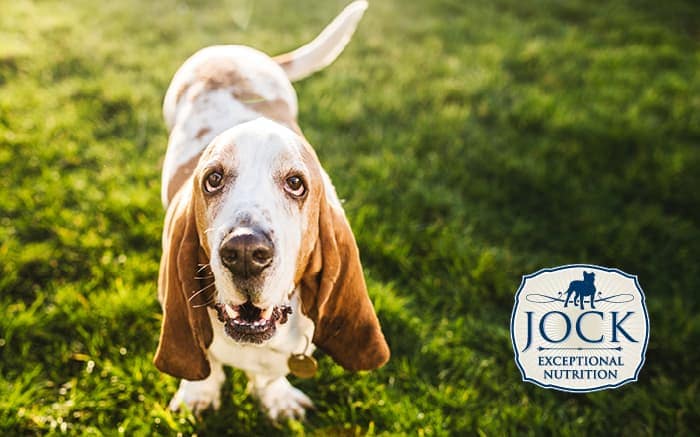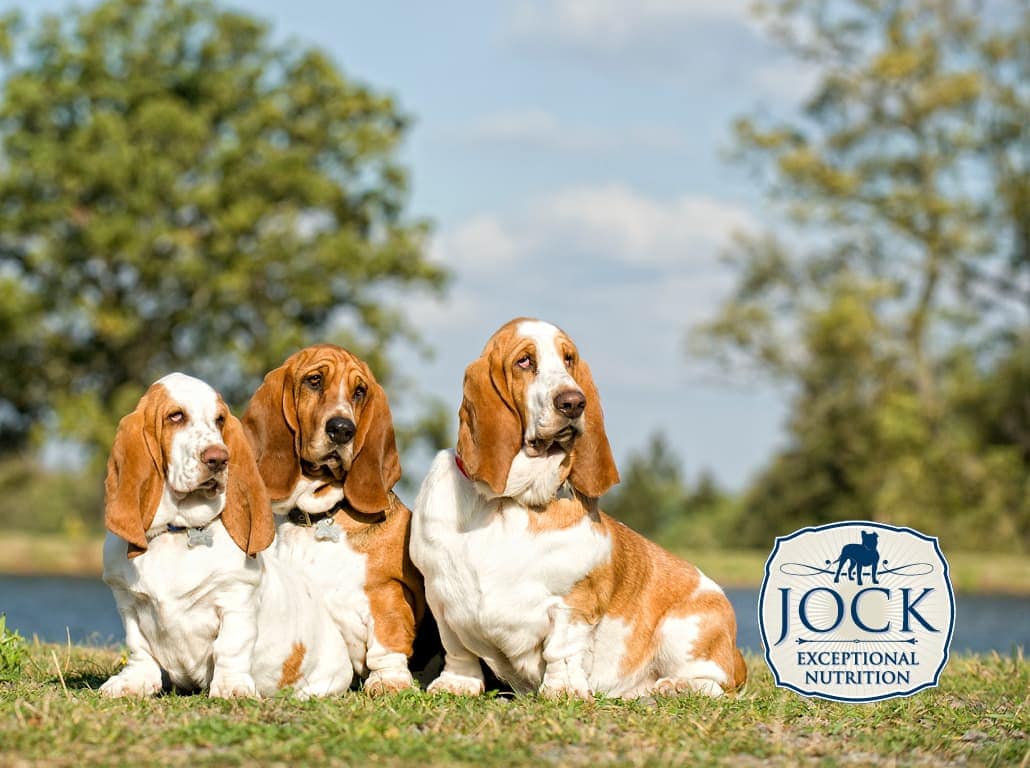With its long ears and friendly nature, one might confuse the Basset Hound with the Easter Bunny around April — but make no mistake: the Basset Hound will sniff out every single Easter egg you’ve hidden in the garden if you don’t keep a close eye. In fact, the Basset Hound will probably track down and follow the Easter Bunny as well if it ever catches a whiff of him. Bred as a scent hound to nose out hares, the Basset’s legendary sense of smell is second only to its ancestor, the Bloodhound. In short, the Basset Hound’s life revolves around following its rather big nose — merrily wobbling around with its big tongue out in search of interesting smells.
Origins
The Basset Hound as we know it today descended from the hounds kept by Saint Hubert in the 6th century. Around the year 1000, the monks of the Saint-Hubert Monastery in Belgium had bred a recognisable hound, the St Hubert’s Hound, or modern day Bloodhound. It’s from this hound that the smaller Basset Hound developed in France.
Until the French Revolution in 1789, the hunting of game on horseback was the sole right of kings and the aristocratic class, which meant that peasants had to hunt on foot. This made the slow, short-legged but stubbornly dedicated Basset Hound an ideal hunting companion for them.
During the reign of Napoleon III, the Basset Hound achieved some unexpected fame when a leading French sculptor, Emmanuel Fremiet created bronze sculptures of the emperor’s hounds. In France today, five different variants of the Basset still exist. But it’s the English standard of the late 19th century that became the most popular and it’s this dog that’s known as the Basset Hound in most of the world today.
Looks
With its droopy, sad eyes and easy-going, clumsy demeanour, it’s hard not to smile when you see this breed. Its ears are huge, with puppies sometimes even tripping over them. The Basset’s very loose skin hangs over a heavy-boned frame, creating the recognisable frowning face. Its legs are short and sturdy and the adult Basset Hound will stand no taller than 36 cm at the shoulder. Don’t be deceived by its short legs, though — it has a looong body, which enables it to get its paws up onto a dinner table to treat itself to a snack.
Weighing in between 20 and 35 kg, Bassets have shortish, hard, smooth coats in almost any colour variations (although the tricolour of white, brown and black are the most common) and shed regularly. Its coat is also quite oily — giving it a recognisable ‘hound scent’. Interestingly, most Basset Hounds have a white blaze at the tip of their long, sable-like tails — a trait that traditionally served hunters well when they were looking for their hounds in the thick bushes…
Personality
Basset Hounds are well-known for their tolerance of and affection for children. They are chilled out and playful, and not nervous or aggressive at all if they’ve been well socialised and exercised regularly. Because they are pack dogs, they love to be around other dogs and people — the flip side is that they can get lonely if left alone too long, resulting in destructive behaviour and howling. And with the big body and mouth, they can howl and bark at quite a volume! Their stubborn scent hound nature makes proper puppy training highly recommended.
Health
Basset Hounds live for 10 to 12 years and are generally healthy. However, it’s eager eating habits often results in obesity and bloating. Its giant ears need to be cleaned regularly to avoid infection while cases of eyelid problems and cherry eye are also quite common. Also be aware that the loose skin around its mouth results in excessive drooling, making your Basset Hound a messy eater and drinker.
Is the Basset Hound for me?
If you’re looking for a clumsy, lazy clown of a dog with a nose for adventure, and you’re able to tolerate its drooling and stubborn nature, the Basset Hound might just be the perfect friendly companion to fill your life with laughs and licks.

by Eckhard Cloete
